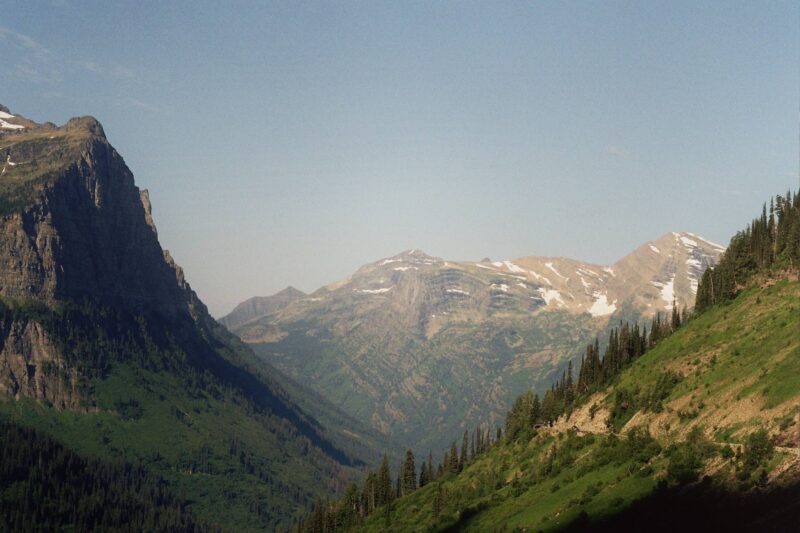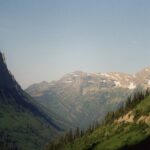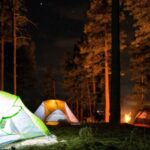Montana holds a presence that does not rely on spectacle or artificial appeal but instead offers scenes shaped by time, silence, and elemental force. Valleys unfold with deliberate rhythm, peaks rise as if sculpted by ancient memory, and rivers trace patterns through untouched forests that stretch beyond what the eye can measure.
The land creates its own poetry without needing to call attention to itself, and within that quiet, something remarkable takes hold of the observer. Each corner reveals a new rhythm, not choreographed for visitors but born out of geological purpose and spiritual gravity.
Across the state, scenery emerges not as a backdrop but as the heart of the experience, setting a pace that pulls the soul away from the mechanical pulse of cities. No moment here feels borrowed or rushed.
The skies refuse limits, the terrain resists simplification, and each landmark carries a weight that history has folded deep into the earth. Moments arrive slowly and take root with power, leaving those who witness them changed without needing to explain why.
The following collection does not present a checklist or a curated loop of famous names. It offers eight places where Montana reveals something rare, where scenery holds more than shape or shade, and where presence matters more than the pursuit.
1. Medicine Rocks State Park
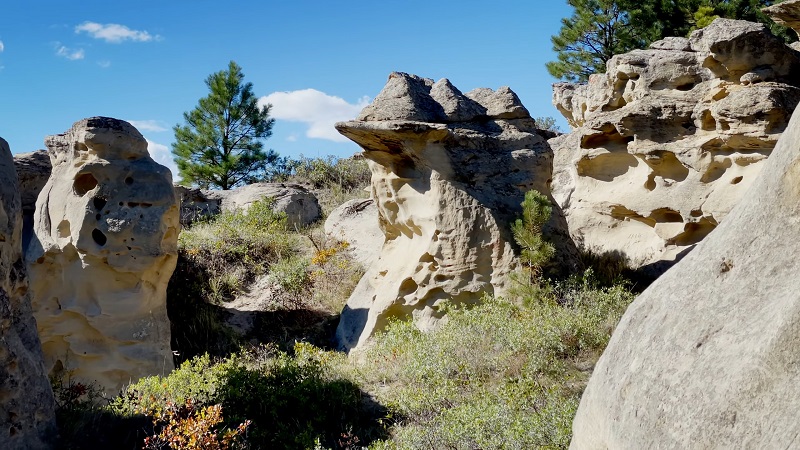
Eroded sandstone spires rise in silent clusters across the plains of southeastern Montana. The formations carry the look of a natural sculpture garden shaped by wind, rain, and millions of years of geologic patience.
Their pale, weathered surfaces glow under shifting light, creating a living texture that changes with every hour. The land feels ancient and deliberate, offering views that stretch far beyond the physical shapes in front of the eyes.
Cultural and Historic Value
- Sacred to Northern Plains tribes for generations
- Petroglyphs and inscriptions carved into the rock faces
- Mentioned by Theodore Roosevelt for its unmatched beauty
Best Times to Visit
- Late spring for cooler temperatures and wildflowers
- Fall for golden light and quieter trails
- Midweek visits recommended for solitude
Visitor Recommendations
- Walk the short interpretive loop trail to reach key formations
- Bring a field notebook or sketchpad to capture the atmosphere
- Avoid peak summer hours to protect the fragile landscape
2. Garnet Ghost Town
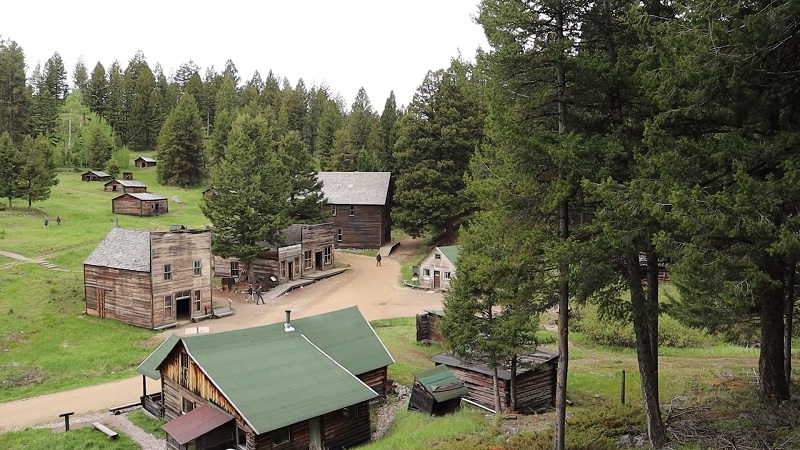
Tucked deep in the mountains of western Montana, Garnet feels like a preserved memory resting on a ridge above time. Dozens of original buildings stand with weathered dignity, surrounded by quiet forests that have slowly reclaimed the edges of the old mining camp.
The silence is total, broken only by wind brushing past wooden beams and doors left slightly ajar.
Travel and Access Tips
- Accessible by dirt road suitable for most vehicles in summer
- Closed to motor traffic in winter but reachable by snowmobile
- Bring cash or check for entrance donation and interpretive materials
Activities and Add-ons
- Combine with nearby hiking trails in Garnet Range
- Photography early in the day for dramatic shadows
- Picnic among the ruins with mountain views as backdrop
3. Sluice Boxes State Park
Carved by the relentless force of Belt Creek, Sluice Boxes State Park offers a dramatic canyon landscape marked by cliffs, deep pools, and the scattered remains of a bygone mining era.
Trails wind through narrow passages and open viewpoints, revealing both natural drama and forgotten structures that speak to Montana’s early industrial past.
Trail and Safety Tips
- Wear sturdy boots for uneven, rocky terrain
- Bring ample water, as shade is limited along most paths
- Use caution during creek crossings in spring or after rainfall
Suggested Activities
- Day hiking with photo stops near abandoned structures
- Fishing in designated spots along the creek
- Exploring side trails for unexpected vantage points
4. Cracon du Nez
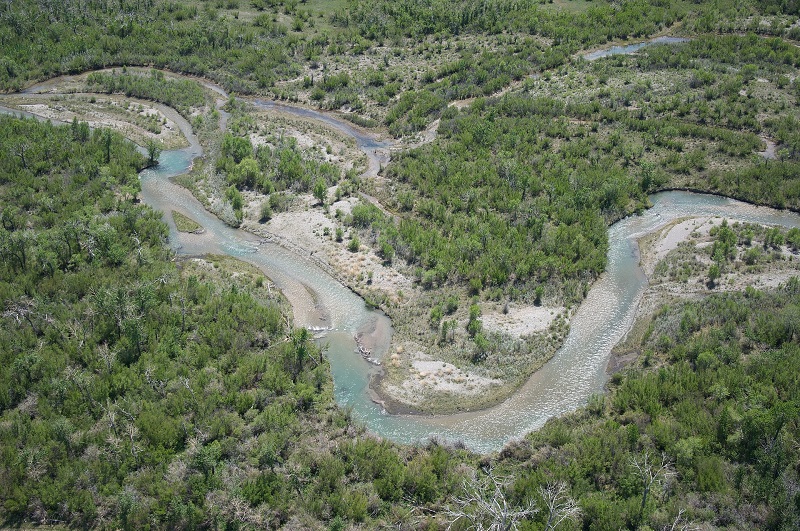
This sharp ridge, jutting between the Missouri and Teton Rivers, creates a dramatic contrast against the surrounding plains. Its name—meaning “snout ridge” in French—refers to the way the land pushes forward with the force of a natural rampart.
Wind carves across the exposed spine of the ridge, amplifying its isolation and enhancing the view across two distinct river basins.
Noteworthy Features
- Narrow ridgeline trail with unobstructed views
- Overlooks Missouri River Breaks to the east
- Site includes an abandoned rail tunnel beneath the ridge
Travel Tips
- Best visited in dry conditions to avoid slick trail surfaces
- Accessible by gravel roads with limited signage
- Little to no cell reception, so plan routes ahead of time
Ideal Activities
- Long-form landscape photography during golden hour
- Quiet walks across the ridge for uninterrupted solitude
- Exploration of the surrounding prairie on foot or by bike
5. Madison Buffalo Jump State Park
Set above a wide plain near the Madison River, this site carries the weight of millennia. Indigenous tribes once gathered here to execute complex buffalo hunts, guiding entire herds toward the limestone cliff edge using expert coordination and ancestral strategy.
The site holds an emotional and historical depth that surpasses its visual drama.
What to See
- The cliff itself, used as a buffalo jump for over 2,000 years
- Interpretive signage detailing indigenous hunting techniques
- Sweeping views of Gallatin Valley and surrounding mountains
Tips for Visitors
- Sunrise or sunset visits offer striking light and fewer people
- Bring binoculars to spot wildlife across the plains
- Allow time to explore the interpretive trail loop near the base
6. Ringing Rocks

In a remote section near Butte, a large boulder field hides an acoustic mystery. When struck with a hammer or small rock, many of the stones produce clear, bell-like tones.
Scientists speculate about the composition and pressure within the rocks, but no explanation can match the immediate experience of sound drawn from stone.
Planning a visit to Ringing Rocks requires preparation, especially due to the remote and rugged nature of the access road. A high-clearance vehicle is necessary, as standard cars may struggle with the rough terrain leading up to the site.
Those arriving should bring a metal hammer, which helps reveal the unusual tones by striking various rocks across the field. It is important to leave every rock exactly where it lies.
Once removed from the site, the ringing effect disappears entirely, breaking the natural balance that makes this place so remarkable. Respect for the location ensures that others can experience its rare soundscape just as fully.
Bonus Tips
- Visit early in the day to avoid heat and crowd buildup
- Combine with a day trip to nearby Boulder Hot Springs
- Stay for sunset views across the open valley floor
7. Holland Lake and Falls
Tucked within the Flathead National Forest, Holland Lake reflects the kind of quiet found only in high alpine basins. Its surface mirrors peaks, forests, and sky with such clarity that the entire landscape feels paused.
A well-marked trail hugs the lake’s northern edge before curving upward through forest to reveal Holland Falls, cascading out of hidden slopes above.
Scenic Points and Trail Features
- Forest-lined shores offering perfect picnic spots
- 3-mile round-trip hike to the falls with moderate elevation gain
- Continuous lake views throughout the walk
Visit Suggestions
Late spring delivers a full waterfall, fed by melting snow from the Swan Range. Early mornings offer absolute stillness across the lake, with only loons and distant water ripple breaking the silence.
Autumn transforms the forest into a gold-and-crimson corridor, giving a different color story around every bend.
8. East Rosebud Lake
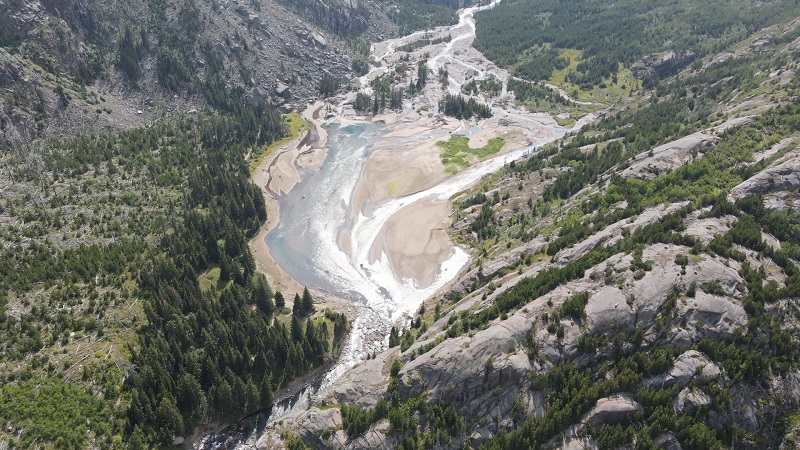
East Rosebud Lake rests at the threshold of one of Montana’s most striking glacial valleys. Its waters collect the reflections of surrounding peaks that feel impossibly steep and snow-cut. Though easily accessible by car, the lake holds a wilderness character that many hike miles to reach in other locations.
The Beaten Path Trail begins here, stretching for over 26 miles through some of the wildest scenery in the Beartooth Range.
What Makes It Stand Out
- Mirror-like lake surface against jagged granite spires
- Trail access to alpine meadows, waterfalls, and hidden lakes
- Deep sense of isolation even with a maintained road
Ideal Times and Conditions
The summer window between June and September offers the most reliable access, though early-season snowmelt can enhance the drama of nearby creeks and waterfalls.
Early autumn delivers clear air, golden larch, and fewer hikers. Wildflowers dominate the shoreline in July.
Recommendations for Visitors
Arrive early to capture calm reflections across the water before wind and light scatter the surface. Hike a short section of the Beaten Path to reach points like Elk Lake or Rimrock Lake. Spend time sitting at the boat dock at dusk when the mountains catch fire in the setting sun.
Final Thoughts
Montana does not need to compete with anywhere else. It offers places that carry weight, silence, and a kind of beauty that leaves no room for distraction.
Each location in this list stands apart, not because someone made it that way, but because nature shaped it with precision and patience. No signs, no crowds, no performance—only space, depth, and presence.
Hello, my name is Harper Barton. The only thing I love more than travelling is writing about it. Sounds strange doesn’t it? But yeah, I adore writing and sharing my experiences about what I have experienced during my travels. Since I am a person who loves being a part of the community, I often write about local festivals with the goal of popularizing outside just small communities they come from.

